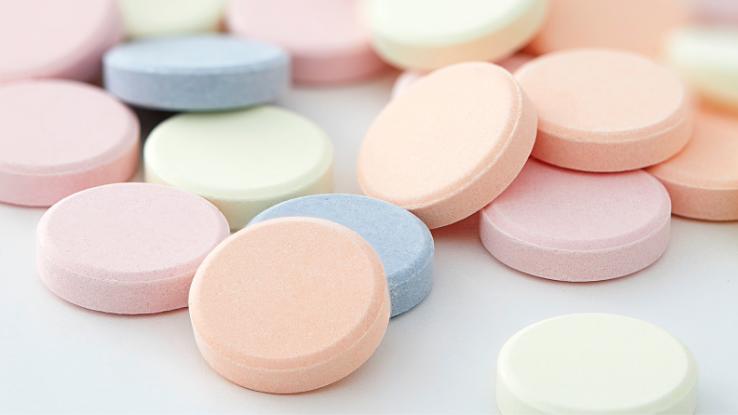Draw the Structure of Propanoic Acid
Acid Reflux: Symptoms, Causes and Treatments

Acid reflux, often referred to as heartburn, is an uncomfortable burning sensation that might occur after a big meal as a result of stomach acid backing up. This article explores acid reflux, what causes it, and how to prevent and treat this uncomfortable condition.
Acid reflux is common, and most people will experience symptoms at some point in their life. It may occur only rarely, or may happen frequently. Persistent acid reflux is associated with the development of gastroesophageal reflux disease (GERD).

Common symptoms of acid reflux include:
- Pain or burning sensation in the chest or throat
- Unpleasant taste in the mouth
- Acid or partially digested food being regurgitated into the mouth
- Other symptoms may include:
- Nausea
- Laryngitis (sore or irritated throat)
- A feeling of food being "stuck" in the chest or throat
- Cough or needing to "clear the throat"
- Hoarseness or change in voice
- Indigestion
- Dysphagia (swallowing difficulty)
- Dental erosion
- Halitosis (bad breath)
- Asthma
- Hiccups
Acid reflux might occur intermittently or frequently. Symptoms typically occur following a meal, particularly a large, fatty or spicy meal and are usually worse on lying down or bending over. However, some symptoms associated with acid reflux may be a warning sign for a more serious underlying condition.
If you are experiencing any of the following "alarm" symptoms you should see your doctor:
- Vomiting blood
- Dark or black stools or presence of blood in the stool
- Chest pain which comes on at random or following exercise
- Unprovoked breathlessness
- Swallowing difficulty
- Unintentional weight loss
- Excessive fatigue
- Loss of appetite
What Causes Acid Reflux?
Normally, when a person swallows food, the esophageal sphincter at the entrance to the stomach will relax to allow food through, and then close, preventing reflux. In patients with acid reflux, the esophageal sphincter may be weak, and it may be unable to close completely. As a result, stomach acid and particles of food may flow back from the stomach, through the sphincter, and up the esophagus. The back-flow of stomach acid and food particles create the uncomfortable symptoms of heartburn.

There are certain factors that increase your risk of suffering from acid reflux. These include:
- Being pregnant
- Being overweight or obese
- Smoking
- Drinking a lot of alcohol
- Drinking a lot of caffeine
- Having certain connective tissue disorders
- Having had surgery on your stomach or throat
- Having a hiatus hernia
Certain foods can also trigger the onset of symptoms. These include greasy foods; meals that are high in fat; butter; mayonnaise; cream-based sauce; salad dressing; chocolate; dairy products; carbonated drinks; and beverages with caffeine. Citruses and acidic foods can also trigger symptoms. Additionally, certain medications can also trigger heartburn such as steroids, blood pressure medications, non-steroidal anti-inflammatory drugs (NSAIDs) such as ibuprofen, antibiotics, contraceptive pills and antidepressants.
How Do You Treat Acid Reflux?
Acid reflux is typically diagnosed by a doctor simply based on your symptoms, provided they are mild. If your doctor is worried there may be an underlying condition such as GERD or esophagitis, they may request further tests.

These might include:
- Upper gastrointestinal endoscopy or esophagogastroduodenoscopy (EGD), in which a small camera is passed through your mouth and into your stomach to examine for any signs of damage to your esophagus or stomach.
- Less invasive means, like stool samples and blood tests
- Barium swallow, which is a type of x-ray taken while you are swallowing.
If you only suffer from acid reflux infrequently — like after a spicy meal — the use of therapeutic antacids may be useful. These come in chewable tablet or liquid form. Side effects of antacids include bloating, wind and constipation. If you are experiencing more frequent acid reflux, more than twice per week, you should see your doctor. They may recommend prophylactic medication to prevent acid reflux.
The most common medication is a proton pump inhibitor (PPI) — e.g. lansoprazole (Prevacid) and omeprazole (Prilosec). PPIs function to block some of the production of stomach acid. Side effects of PPI medication include nausea, diarrhea, constipation, headache, and rash. Some PPI medication can be obtained over the counter without a prescription. You should consult your doctor before taking PPI medication if you have any other health condition, or if you are taking any other medication, supplements, vitamins, herbal remedies or recreational drugs.
Another medication commonly used is H2 blockers — e.g. ranitidine (Zantac) and famotidine (Pepcid AC). H2 blockers also function to reduce production of stomach acid. You may need to continue on medication long-term, or it may be possible to "wean off" medication and control acid reflux using lifestyle alterations alone. In rare cases where medication has been unsuccessful in alleviating symptoms, surgery may be suggested to repair and strengthen the esophageal sphincter and prevent gastric reflux.
Tips for Avoiding Acid Reflux:
- Keep a diary of your symptoms and food intake. This can help you to identify "trigger" foods, which you can then avoid.
- Eat smaller and more regular meals. Avoid large meals.
- Finish eating at least 2–3 hours before lying down in bed.
- Avoid eating while lying down, and, while eating, remain upright.
- Avoid smoking.
- When sleeping, raise your head on an additional pillow or two.
If acid reflux occurs frequently and is left untreated it can lead to other conditions, such as esophagitis and gastroesophageal reflux disease (GERD). GERD is a condition that results from chronic or persistent acid reflux over time which damages the lining of the esophagus. Untreated, GERD is associated with an increased risk of a precancerous condition called Barrat's esophagus, and esophageal cancer, especially in smokers and those who drink a lot of alcohol.
It is possible to live a balanced and healthy life even if you have acid reflux. You may need to work with a dietician or doctor to establish healthy eating and behavioral patterns, and you may need to be prepared for some trial and error before finding a successful treatment plan, but, in the end, many people are able to successfully control their condition.
Resource Links:
- Medline Plus (2021). Gastroesophageal reflux disease.
- Mayo Clinic (2020). Gastroesophageal reflux disease.
- NHS (2020). Heartburn and acid reflux.
- National Institute of Diabetes and Digestive and Kidney Diseases (2020). Acid Reflux (GER & GERD) in Adults.
- NHS Inform (2020). Gastro-oesophageal reflux disease (GORD).
Source: https://www.symptomfind.com/health-conditions/acid-reflux-overview?utm_content=params%3Ao%3D740013%26ad%3DdirN%26qo%3DserpIndex
0 Response to "Draw the Structure of Propanoic Acid"
Post a Comment